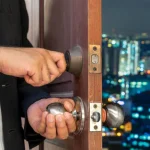If you’re serious about cigars, you know that proper storage is essential. A cabinet humidor is more than just a place to keep your cigars—it’s a controlled environment designed to maintain the ideal humidity and temperature for long-term preservation of humidor cabinets.
But do humidor cabinets need electricity to do their job? The answer depends on the type of humidification system they use. Some require power to operate active humidification systems, while others rely on passive humidification without any electrical components.
In this article, we’ll break down the differences between active and passive humidification, explore the pros and cons of each, and help you determine which type of humidor cabinet is right for your cigar collection.
What is a Humidor Cabinet?
A humidor cabinet is a large, furniture-style cigar storage unit that maintains the proper relative humidity (RH) to keep cigars fresh. Unlike small desktop humidors or travel humidors, cabinets can hold hundreds—sometimes thousands—of cigars, making them ideal for collectors and enthusiasts.
These cabinets use either active or passive humidification systems to maintain optimal humidity levels, ensuring your cigars don’t dry out or become overly moist.
How Humidor Cabinets Regulate Humidity
Cigars are delicate. Too much moisture, and they can become spongy or develop mold. Too little, and they’ll dry out, burn too fast, and lose their flavor. That’s why maintaining an RH level between 65% and 72% is crucial.
Humidor cabinets regulate humidity using one of two systems:
- Active Humidification (Electric) – Uses electronic humidifiers with sensors, fans, and moisture control systems to maintain precise humidity levels.
- Passive Humidification (Non-Electric) – Uses humidification packs, sponges, or beads that slowly release moisture into the air.
Now, let’s dive into the details of both.
Active Humidification – Do Humidor Cabinets Need Electricity?
Active humidification refers to an advanced electronic system designed to automatically regulate the moisture levels within a humidor cabinet. Unlike passive systems that rely on manual intervention, active humidification uses built-in fans to evenly distribute humidity, ensuring that every cigar in the collection receives consistent moisture.
These systems also incorporate digital sensors that monitor humidity levels in real time and make automatic adjustments as needed. Additionally, an electric cigar humidor will generally include automatic water reservoirs that replenish moisture when necessary, removing the guesswork and reducing maintenance efforts. Since these features require power to operate, electric humidor cabinets must be plugged in to function effectively.
One of the main advantages of active humidification is its precise humidity control. Digital sensors continuously measure and adjust humidity levels, eliminating fluctuations that could impact cigar quality. This makes it a low-maintenance option, as users don’t need to frequently replace humidification packs or refill water reservoirs manually.
Electric humidors are particularly beneficial for large cigar collections, as the built-in fans ensure uniform humidity distribution across all shelves. Some high-end models even include temperature control, allowing for an optimal environment that further preserves cigar flavor and longevity.
Passive Humidification – A More Traditional Approach
Passive humidification is a non-electric method of regulating moisture in a humidor cabinet. Instead of relying on electronic systems, passive humidors use moisture-retaining elements to maintain humidity levels. These can include humidification packs like Boveda, which release or absorb moisture as needed to sustain a stable environment.
Another common option is gel beads, which slowly evaporate water into the air, providing consistent humidity without requiring external power. Traditionalists may also opt for sponges soaked in distilled water, a simple yet effective way to introduce moisture into the humidor.
One of the biggest advantages of passive humidification is that it does not require electricity. This means it can be used anywhere, even in locations without easy access to power, and there’s no risk of system failure due to electrical issues. Passive humidors are also more affordable, as they don’t include built-in electronic components, making them a budget-friendly option for casual smokers.
Additionally, many cigar purists prefer the traditional feel of passive humidors, as they resemble the old-world craftsmanship and natural storage methods that have been used for centuries.
Conclusion
When it comes to choosing between active and passive humidification, the right humidor cabinet for you depends on your storage needs, lifestyle, and maintenance preferences. Electric humidor cabinets with active humidification offer precise control, minimal maintenance, and are ideal for large cigar collections or those in extreme climates.
However, they require power and come at a higher cost. On the other hand, traditional passive humidors provide a classic, electricity-free option that works well for smaller collections but demands more hands-on maintenance and regular humidity adjustments.
If you want effortless humidity control and reliability, an electric humidor cabinet is the way to go. But if you appreciate a more traditional approach and don’t mind monitoring humidity levels yourself, a passive humidor may suit you just fine. Either way, ensuring your cigars are stored at the right humidity is key to preserving their flavor, aroma, and overall smoking experience.







